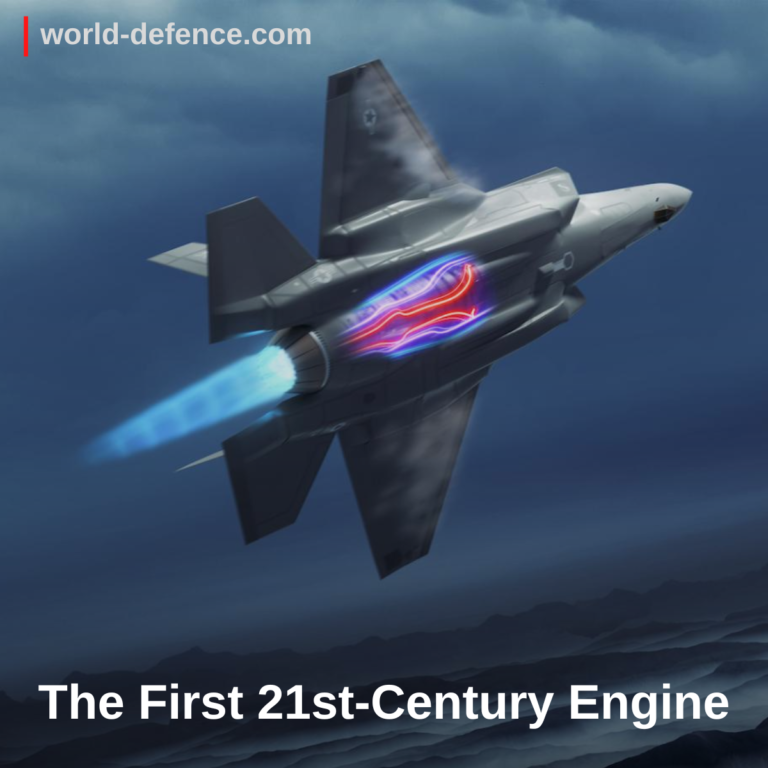
“Designing a fighter jet engine is an incredibly humbling experience,” says David Tweedie, VP and general manager for advanced products at GE’s Edison Works. “There’s literally zero room for error,” which is why Tweedie is so excited about GE’s new XA100 passing its final and most rigorous test — conducted in August at Tennessee’s Arnold Air Force Base — and what that means for the future of America’s national security.
The XA100 is an “adaptive cycle” engine, designed for maximum efficiency across subsonic, transonic, and supersonic flight speeds. Being engineered to seamlessly, and automatically, go from high-thrust events — think takeoff and advanced aerial combat maneuvers — to high-efficiency mode makes the XA100 a true super jet. Additionally, the XA100 exhibits high fuel efficiency on long-haul flights, which, of course, is not something that fighter jets are traditionally known for. But Tweedie says that’s about to change.
“Many thought the jet engine was a mature technology, that it couldn’t be improved,” says Tweedie, “but the team here at Edison Works knew there was a next level.” Designed for future and retrofit use in Lockheed Martin’s F-35 — the stealth multi-role combat aircraft that serves as the cornerstone of the U.S. fighter fleet — the XA100 is the answer to a very important question that the U.S. military posed to GE in 2016: How can we ensure American air superiority for the next generation?
Advertisement
“Hundreds of brilliant GE aerospace engineers picked up that gauntlet, and by passing the Air Force’s latest tests with flying colors, the XA100 just told us we were more than up to the task,” says Tweedie. “This engine isn’t a concept, proposal, or research program. This is a flight-weight engine that would provide the F-35 with more range, faster acceleration, and significant mission systems growth, to harness the F-35’s full capabilities. It’s the first 21st-century engine.” What this means for the coming decades, he adds, is that U.S. pilots flying F-35s outfitted with the XA100 would have the ability to outperform the enemy and exploit an asymmetric battlefield advantage, thanks to the engine’s revolutionary technological advancements.
“The U.S. has maintained global air superiority for 70 years,” he says, “but it’s on every generation to make sure that we have the capabilities to defeat the enemy, no matter where in the world they may be.” And the XA100 does just that, supercharging the F-35 to fly farther, faster, with more flexibility. It vastly improves upon legacy engines by delivering a 30% range increase — critical for Pacific theater readiness — via 25% better fuel efficiency, as well as a 10% boost to thrust, which translates to greater than 20% faster acceleration, for unprecedented tactical maneuverability.
Another big advantage designed to boost the tactical prowess of the F-35, now and in the future, is the XA100’s game-changing 100% increase in thermal management, or heat dissipation. Doubling the capacity for cooling is key in transforming the F-35 fleet into a far more versatile force. The “third stream” of the XA100 augments the core engine airstream and fan-bypass stream with an additional cooling stream surrounding the chassis, meaning the F-35 would be able to handle the higher heat generated as more and more powerful combat systems are brought online.
Advertisement
Read More
And as an adaptive-cycle engine, the XA100 can, like commercial aircraft engines, burn much less fuel than legacy fighter engines on longer flights. Most jet engines are built to optimize either fuel efficiency and range (commercial) or thrust and performance (military); the XA100 does both, allowing pilots to engage in a wider range of missions.
It’s also designed to be easily swapped into most of the existing U.S. Armed Forces F-35 fleet — that majority being composed of the Air Force’s conventional F-35A and the Navy’s carrier-based F-35C — with no structural airframe modifications necessary.
Tweedie says that GE’s XA100 is set to be “the most capable and durable combat engine ever deployed, ensuring the F-35’s relevance for decades to come,” but it would also represent a huge step toward the U.S. Department of Defense’s efforts to shrink the fighter fleet’s carbon footprint. The biofuel-compatible XA100 produces 25% less CO2 than the most efficient legacy engines.
“This is the engine of the future,” says Tweedie, “and we’re ready to move beyond the R&D program and begin more serious production to meet the U.S. military’s challenge — to upgrade its F-35 fleet before the end of the decade.”
Top: An artist’s rendering of the F-35 equipped with an XA100 engine. Credit: GE Aerospace
Advertisement